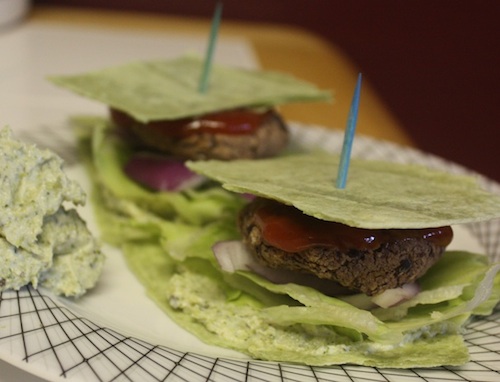I get so many questions about gluten, converting recipes to gluten-free, and eating a gluten-free diet, that I asked my friend Talia, who has been gluten free for over 6 years now, to share her story and tips for cooking and living gluten-free.

Being gluten free is, surprisingly, easier than you think. I have been gluten free for over 6 years now, and love it. Celiac and gluten intolerance can present with a wide variety of symptoms, so do your research before talking to your doctor if you suspect this might be the case. Celiac causes malabsorption issues, so you don’t properly digest your food, can have vitamin deficiencies and might even feel sick a lot of the time.
I had been sick on and off with digestive issues since I was a child, and pictures of me show I had what I like to call the ‘starving child belly’ – a slightly distended abdomen. My parents took me to doctor after doctor, all of whom told them it was mild food allergies and I would probably just grow out of it. I was an extremely anxious child who was scared to eat anywhere but home because of the way I felt. I just thought feeling that was normal, since I grew up feeling that way. As a teenager, I knew my belly would distend so much throughout the day that I was a size 0 when I woke up, and could be up to a size 10 by bedtime.
In the end, I was diagnosed by fluke. My regular doctor was unavailable when I needed medication for a sinus infection, so instead I saw a diagnostician. He looked through my chart documenting all my symptoms and results from various tests, and almost immediately told me I had celiac sprue and should follow a gluten free diet. I was baffled, and actually told him he was crazy. He told me to give the diet a few weeks, and come back. I was very upset, and didn’t want to follow it at all. About 3 weeks in, I woke up one day and realized I felt good, better than I can ever remember feeling, and I’ve continued feeling good for years now.
The diagnosis was extremely overwhelming at first, although by now, checking for gluten is second nature. The trick is to look at all the whole foods available and realize how much you CAN have. It’s not a deprivation diet! It is a diet full of rich, wholesome, natural foods that make you feel amazing. It can be hard at first, but some keywords to look for to find hidden gluten are: Malt, barley, oat, rye, kamut, wheat. Modified food starch that is not made in the United States may contain gluten, so that is another concern.
I make my own flour blend, rather than rely on expensive store-bought mixes. My recipe is simply 3 cups brown rice flour, 1 cup potato starch, 1/2 cup tapioca flour, 1 cup sorghum flour and 5 tsp xanthan gum. You just mix the flours well, making sure to shake before each use, and use as you would any other flour.
Bob’s Red Mill makes really affordable gluten free flours, baking mixes and oats. OrgraN is another great brand that makes all sorts of gluten free foods, from pasta to cookies to falafel mix! They even have this amazing product called "gluten free gluten substitute" that I use to make seitan.
I love how adaptable Happy Herbivore's recipes are for gluten free or other 'restricted' diets. One of my favorite recipes of hers is the Quick Black Bean Burgers, I just use my gluten-free oats to bind the burgers. Beans, rice, gluten free oats, fruits, and vegetables are naturally gluten free and delicious. Simple substitutions make most recipes gluten free with no problems. Oats are naturally gluten free, but may become cross-contaminated in processing.
For those food items that aren’t naturally gluten free, like bread or pasta, the good news is that more and more products are coming on the market to help you feel like you’re not missing anything by keeping a gluten free diet. Another option is Asian rice noodles, like cellophane noodles, which are made only of rice flour, or soba noodles made with only buckwheat (all naturally gluten free). The important thing is to try and find what YOU like best and what makes you feel normal, and not like you are missing out on life.

One thing you need to make sure of is that any ingredient that you are using is completely gluten free, and is not made on equipment that is used for products containing gluten. For instance, Goya dried beans are made on equipment used for wheat-containing products, so a celiac cannot use Goya dried beans. Pam non-stick spray for baking has flour in it, so that's not gluten-free either. Preventing cross contamination is extremely important with a gluten free diet.
One money saving tip for buying gluten free – use the internet wisely! Lots of your pantry staples will be whole foods you can buy at the supermarket, farmers market or wholesale club but for those items that are expensive in the store, like pasta or baking mixes, buying by the case online can be very cost-effective. Amazon stocks a ton of these products and lists prices per ounce, which can help you estimate cost better than the price per case. Don’t be afraid that going gluten free with wreck your budget, most of the staples are the same as a regular diet and the occasional splurge on gluten free doughnuts is totally worth it to feel fulfilled.
If you think you might have celiacs or be gluten intolerant, please talk to your doctor.













